1 サマリー 甘やかしと優しさを混同しないために
子どもを慈しむ気持ちは親なら誰しも自然に湧き上がりますが、その思いが時に子どもの成長を妨げる甘やかしへと変換されてしまうことがあります。甘やかしは要求をすぐに満たし不快感を回避させる介入です。一方で優しさは子どもの感情に共感しつつ、自分で選択し行動できる機会を残す支援です。本稿では甘やかしと優しさの境目を分かりやすく整理し、適切なしつけの線引きを七つの視点から解説します。柱は次の三点です。1 子どもの自律を中心に考える 2 親の感情を整理する 3 具体的な行動指針を定める。読み終えた時点で、親としてどこまで手を差し伸べどこで見守るかを判断できるフレームワークが手に入るでしょう。
2 甘やかしとは何か 短期的満足が長期的成長を阻む仕組み
甘やかしとは子どもが感じる不快を即座に取り除き、努力や待機を伴わずに欲求を叶える対応です。おもちゃを片付けないまま次のおもちゃを欲しがった時に親が全部片付けて与える場面を想像してください。子どもは快適さを学ぶ一方、片付けの責任や自己管理の機会を失います。脳科学的には達成を先延ばしにする力が育たず、扁桃体のストレス耐性が低下する傾向が示されています。さらに行動心理学では強化頻度を不規則に上げると要求行動がエスカレートしやすいことが知られています。甘やかしは短期的に泣き声を止め家庭を静かにしますが、長期的には自己調整力自己効力感問題解決力の成熟を妨げるリスクが高いのです。
3 優しさとは何か 共感と自律を支える温かい関わり
優しさは子どもの感情を言葉で認めながら、必要最小限のサポートで自分の力を発揮させる接し方です。転んで泣いた子にすぐ抱き上げる代わりに「痛かったね」と共感し手を差し伸べ、自分で立ち上がるのを待つ行動が典型例です。この時親は安全確保と情緒安定を担保しつつ、行動選択や回復の主体を子どもに残しています。発達心理学で言うスキャフォールディングの概念に近く、大脳前頭前野の実行機能を伸ばす効果が期待されます。優しさは不快の解消ではなく成長の手助けであり、子どもは挑戦と安心を同時に経験することでレジリエンスを高めます。
4 境界線を引くための三つの視点 目的タイミング手段
適切な線引きには明確な目的の把握が不可欠です。
1 目的
その関わりが子どもの安全自律学習のどれを支えるのか言語化します。
2 タイミング
泣き声が始まった直後に介入するのか少し待つのかを決めます。感情が高まり過ぎる前に支援することで学習可能な状態を守ることも重要です。
3 手段
物理的介助言語的ガイド視覚的サポートなど選択肢を複数持ち、子どもの発達段階に合わせて最も軽い介入から試します。
この三点を家族で共有すると、場当たり的な甘やかしを減らし一貫性のある優しい支援へと統一できます。
5 年齢別アプローチ 乳幼児期幼児期学童期の線引き
乳幼児期は安全確保が最優先で要求への即応が必要ですが、簡単なジェスチャーや選択肢提示で能動性を生む工夫も可能です。幼児期は自己主張が強まり衝突が増えるため、親はルールを視覚化しタイマーやカードで順番を管理しながら待つ経験を積ませます。学童期になると論理的思考が発達し、自分の行動と結果の因果関係を理解できるので、家庭会議でルール作りに参加させ、違反時の修復プランを考えさせるフェーズへ移行します。年齢ごとに目的と手段を調整することで甘やかしにならない優しい支援が実現します。
6 よくある誤解とリフレーミング 危険の回避と挑戦の機会
危険な行動を止めるのは甘やかしではなく必要な保護です。しかし危険を過大評価して挑戦機会を奪うと主体性が低下します。例えば遊具の高い場所に登ることを禁止する代わりに、安全な高さで降り方を教える選択肢があります。また失敗体験を避けさせるのは優しさと思われがちですが、失敗後の感情を一緒に整理し再挑戦を促す方が成長に寄与します。リフレーミングとは状況の意味付けを変える技法で、親がネガティブ事象を学びのチャンスと捉え直すことで子どもも前向きな視点を獲得します。
7 家庭で使える実践アイデア ルール作り声かけフィードバック
1 家庭ルールボード 守るべき行動を子どもと絵で描き玄関に貼り、達成に星シールを貼る方法で視覚的に自律を促進します。
2 感情ラベリングタイム 一日一回その日の嬉しい悲しい悔しいを親子で言葉にし、優しさの土台となる共感語彙を増やします。
3 行動フィードバックカード 良い行動を見つけたらカードに理由を書き渡し、その場で具体的に認めます。
4 親のセルフチェックリスト 介入の前に目的タイミング手段が揃っているか三秒で確認し感情的甘やかしを防ぎます。
5 週末リフレクション 失敗も成功も家族で振り返り、線引きの基準をアップデートします。
これらを継続することで優しさがルーティン化し、甘やかしの誘惑に流されにくい家庭文化が形成されます。
8 まとめ 今日から始める三つのアクション
1 子どもの不快を全て除く前に学びの機会があるか自問する
2 共感の言葉をかけてから最小限の支援にとどめる
3 目的タイミング手段を家族で共有し一貫した対応を取る
甘やかしと優しさの線引きは難しく見えても、フレームワークと日々の対話があれば確実に磨かれます。今日から声かけの前に三秒間考え、子どもが自分で乗り越える力を信じる一歩を踏み出してみてください。自律と愛情が両立する家庭環境が子どもの未来を力強く支えます。
Indulgence versus Kindness — Drawing the Right Line in Discipline
1 Summary — Why We Must Distinguish Indulgence from Kindness
Parents naturally want to spare their children discomfort, yet that impulse can blur into indulgence and hinder growth. Indulgence meets demands immediately and removes frustration, while kindness empathizes with feelings and leaves room for the child to act. This article clarifies the boundary between the two and explains seven perspectives for proper discipline. The pillars are 1 putting self-regulation at the center, 2 managing parental emotions, and 3 setting concrete guidelines. By the end, you will have a framework for deciding when to step in and when to step back.
2 What Is Indulgence — How Short-Term Relief Blocks Long-Term Growth
Indulgence eliminates discomfort without effort or waiting. Picture a child who refuses to tidy up but demands a new toy; the parent cleans up and hands it over. The child learns comfort but misses responsibility and self-management practice. Neuroscience links this to weaker delay-of-gratification circuits, and behavior studies show that inconsistent reinforcement escalates demands. Indulgence calms the home for the moment yet risks undermining self-control, efficacy, and problem-solving in the long run.
3 What Is Kindness — Warm Support that Fosters Autonomy
Kindness acknowledges feelings while allowing the child to act. When a child falls, the parent says “That hurt, didn’t it” and offers a hand, waiting for the child to stand. This resembles scaffolding in developmental theory and strengthens executive functions. Kindness provides safety and challenge together, building resilience.
4 Three Angles for Setting Boundaries — Purpose, Timing, Means
Clear boundaries require purpose, timing, and means. 1 Purpose — state whether the intervention supports safety, autonomy, or learning. 2 Timing — decide whether to step in immediately or let the child try first. 3 Means — choose the lightest effective aid, from verbal cues to visual supports. Sharing this triad within the family reduces ad-hoc indulgence and unifies compassionate support.
5 Age-Specific Strategies — From Infancy to the School Years
Infants need swift responses for safety, but parents can still offer simple choices to spark agency. Preschoolers benefit from visual rules and timers that let them practice waiting. School-age children can join family rule-making and design repair plans when rules are broken. Adjusting purpose and means to each stage prevents indulgence and sustains supportive kindness.
6 Common Misconceptions and Reframing — Avoiding Danger while Allowing Challenge
Stopping dangerous acts is protection, not indulgence. Yet overestimating risk can strip opportunities. Instead of banning a high slide, teach a safe descent at a lower height. Likewise, shielding from failure may seem kind, but guiding reflection after failure promotes growth. Reframing adversity as a learning chance equips children with a positive lens.
7 Practical Ideas for Home — Rules, Language, Feedback
1 Family rule board — draw rules with children and add star stickers for compliance.
2 Emotion labeling time — share daily feelings to expand empathy vocabulary.
3 Feedback cards — write down good actions immediately and hand the card to the child.
4 Parental self-check list — pause three seconds to confirm purpose, timing, means before acting.
5 Weekend reflection — review both successes and failures and adjust boundaries together. Continuous use of these tools builds a household culture where kindness is routine and indulgence loses its pull.
8 Conclusion — Three Actions to Start Today
1 Before removing discomfort, ask if a learning chance exists.
2 Offer empathetic words first, then minimal support.
3 Share purpose, timing, and means within the family for consistent responses.
With a simple framework and everyday dialogue, the line between indulgence and kindness becomes clear. Take three seconds before intervening and trust your child’s ability to overcome challenges. A home that balances autonomy and affection will powerfully support your child’s future.




コメント